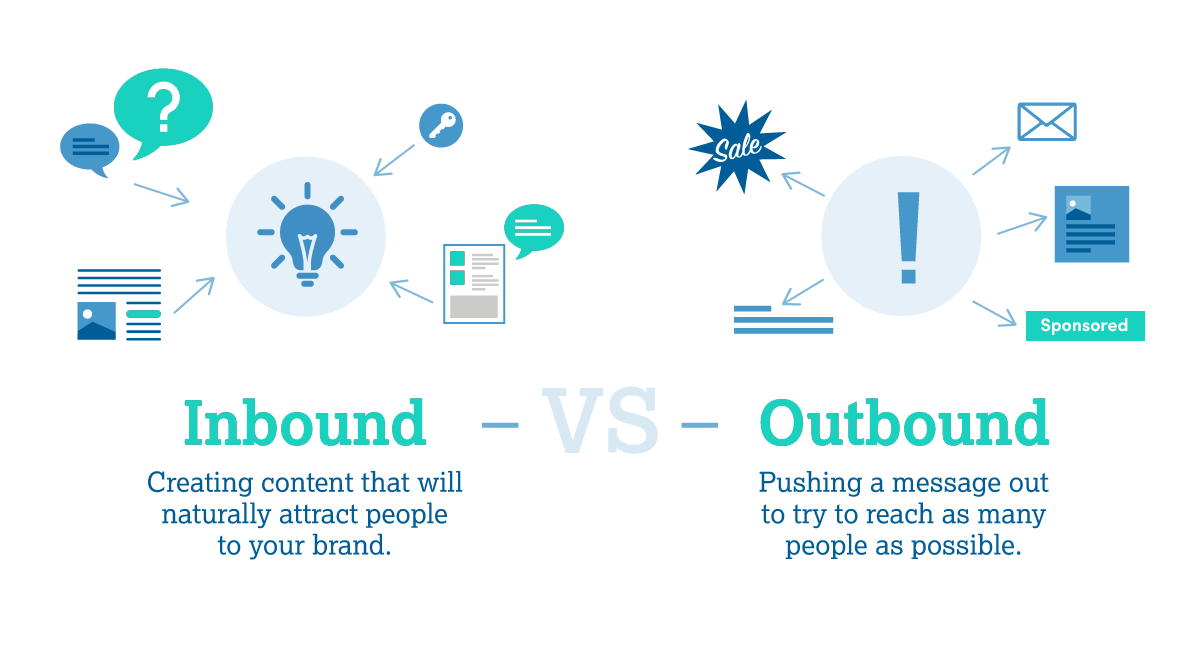Inbound Lead Generation
What is In-Bound Lead Generation?
Definition:
Inbound Lead Generation refers to the systematic process of attracting and converting potential customers through the creation and distribution of valuable and relevant content. Unlike traditional outbound methods that involve reaching out to prospects directly, inbound lead generation focuses on establishing an online presence that naturally attracts and engages a target audience. This approach often involves content marketing, SEO strategies, social media, and other techniques to draw potential leads to a company’s digital platforms.
Analogy:
Think of inbound lead generation as a magnet. Just as a magnet attracts metal filings, inbound strategies draw potential customers to a business by providing them with valuable and informative content, establishing the company as a trustworthy and knowledgeable resource.
Further Description:
Inbound lead generation involves several key components:
Content Creation:
- Develop high-quality and relevant content that addresses the pain points, questions, and interests of the target audience.
- Utilize various content formats such as blog posts, ebooks, whitepapers, webinars, and videos to appeal to diverse preferences.
SEO Optimization:
- Implement search engine optimization (SEO) strategies to enhance the visibility of content in search engine results, making it easier for potential leads to discover the business.
- Focus on relevant keywords and optimize on-page elements for better search engine rankings.
Social Media Engagement:
- Leverage social media platforms to share and promote content, engage with the audience, and build a community around the brand.
- Encourage social sharing to expand the reach of content to a broader audience.
Lead Magnets:
- Offer valuable resources or incentives, such as ebooks, guides, or free trials, to encourage visitors to provide their contact information, thereby becoming leads.
- Implement effective landing pages and forms to capture lead data.
Email Marketing:
- Nurture leads through targeted email campaigns, providing additional valuable content and guiding them through the sales funnel.
- Personalize emails based on lead behavior and preferences.
Analytics and Iteration:
- Use analytics tools to track the performance of various lead generation strategies and channels.
- Iterate and optimize strategies based on data insights, adjusting approaches to improve effectiveness continuously.
Why is Inbound Lead Generation Important?
Customer-Centric Approach: Inbound lead generation focuses on meeting the needs and interests of the audience, building trust and credibility.
Cost-Effectiveness: Compared to traditional outbound methods, inbound strategies can be more cost-effective, especially in the long term, as they create a sustainable online presence.
Relationship Building: By providing valuable content and engaging with potential leads, inbound strategies facilitate the building of meaningful relationships with the audience.
Adaptability: Inbound lead generation allows for adaptability as businesses can adjust their strategies based on changing market trends and audience behaviors.
Examples and Usage:
HubSpot: HubSpot is a prominent example of successful inbound lead generation. They provide a wealth of educational content, tools, and resources, attracting users who are interested in marketing and sales solutions.
Neil Patel: Neil Patel, a renowned digital marketer, utilizes inbound strategies through his blog, webinars, and online courses. His valuable content attracts those seeking expertise in digital marketing and SEO.
Buffer: Buffer, a social media management platform, employs inbound lead generation by offering educational content on social media strategies and tools, attracting users interested in improving their social media presence.
Key Takeaways:
- Inbound lead generation revolves around creating and sharing valuable content to attract and engage potential leads.
- Implementing SEO strategies is crucial for making content discoverable and driving organic traffic.
- Offering incentives or valuable resources encourages visitors to provide contact information, converting them into leads.
- Inbound strategies focus on building relationships and trust with the audience, fostering long-term customer loyalty.
- Regularly analyze performance metrics to iterate and optimize lead generation strategies for better results.





